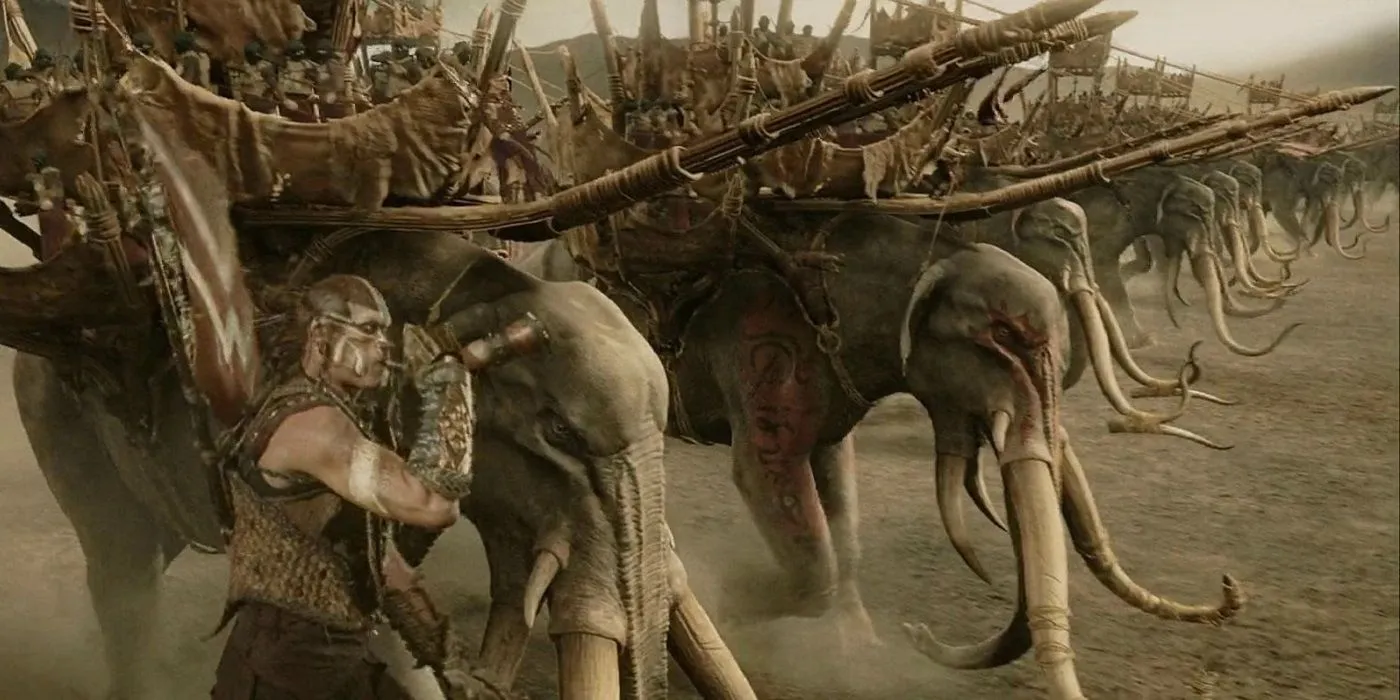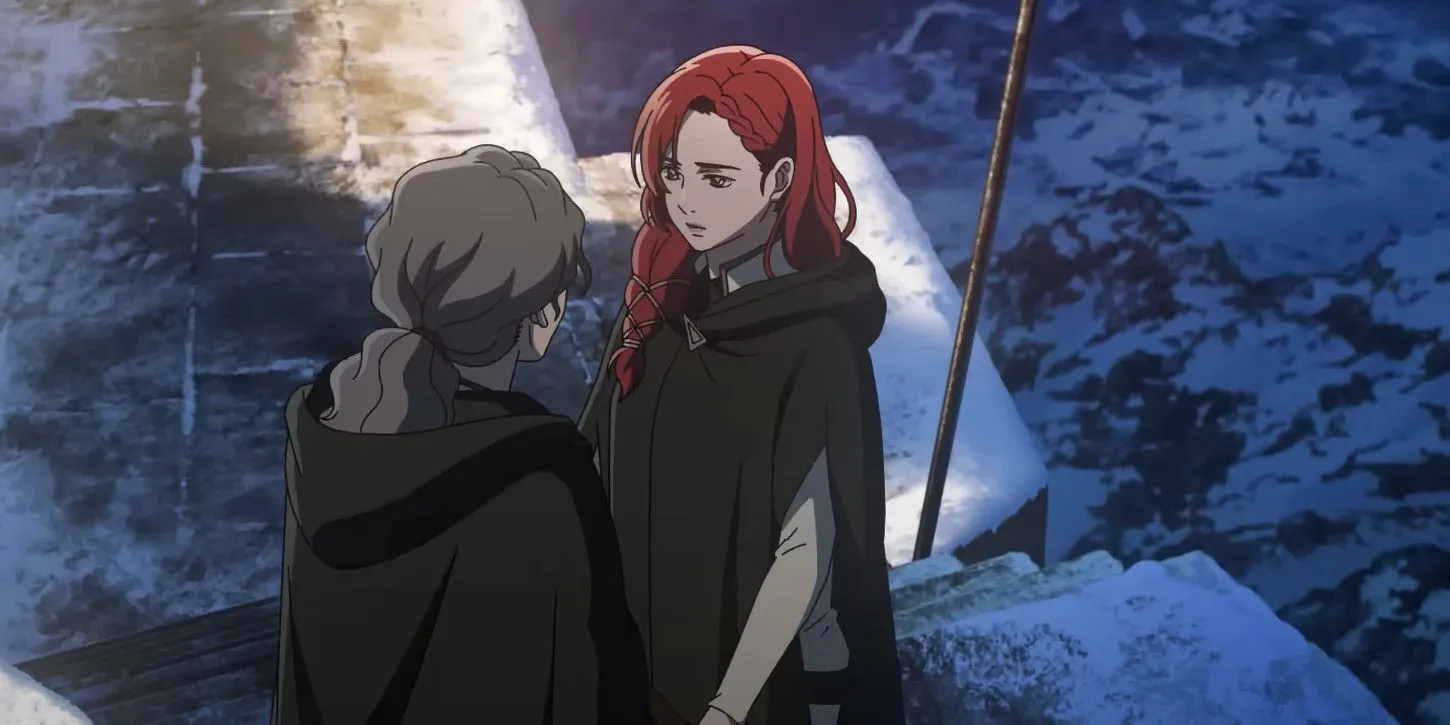
This article contains spoilers for The Lord of the Rings: The War of the Rohirrim.
The Lord of the Rings: The War of the Rohirrim – An Exploration of Tolkien Easter Eggs
The Lord of the Rings: The War of the Rohirrim, set for release in December 2024, draws inspiration from J.R.R. Tolkien’s “The House of Eorl,”found in Appendix A of The Lord of the Rings. Although the film diverges from its literary source, it brims with captivating references to the broader Tolkien universe. The narrative cleverly interlaces callbacks to Peter Jackson’s film adaptations, giving life to Tolkien’s rich mythos.
Creative Direction and Anime Fusion
Directed by renowned anime director Kenji Kamiyama, known for his work on Ghost in the Shell, this adaptation uniquely blends Tolkien’s high fantasy with the artistry of Japanese animation. The Lord of the Rings lends itself beautifully to the anime format, allowing its diverse characters and fantastical creatures to be represented in stunning detail. The visual storytelling immerses audiences in a genuine Tolkien experience, even when the content strays from the original texts.
10 Fantastic Beasts That Roamed Middle-Earth
Tolkien’s Iconic Creatures Return

The film features notable callbacks to Tolkien’s universe, particularly through its portrayal of fantastical creatures such as the Great Eagles, Mûmakil, and Orcs. These iconic beings helped shape the landscape of fantasy literature and have continued to inspire generations. Interestingly, War of the Rohirrim breaks tradition by excluding Elves, focusing instead on these familiar beasts that echo Tolkien’s expansive world.
Notably, some creatures do not appear in “The House of Eorl,”making their inclusion beautiful Easter eggs for fans. For instance, the Watcher in the Water appears in a lake but differs significantly from Peter Jackson’s depiction, while the Mûmakil evokes imagery reminiscent of Hayao Miyazaki’s Princess Mononoke.
Symbolism of Rohan Throughout the Narrative
Echoing Tolkien’s Vision of Rohan

Rich symbolism of Rohan permeates the film, drawing directly from Tolkien’s intricate descriptions. The white flower simbelmynë, which blooms on Rohirrim graves, is a poignant literary reference connecting various works, including Amazon Prime’s The Rings of Power. This flower becomes significant during Fréaláf’s coronation, uniting elements of Tolkien’s lore.
The film further showcases Helm’s horn, a significant artifact previously heard during pivotal moments in The Lord of the Rings: The Two Towers. This horn, used to rally the Rohirrim, signifies the novel’s themes of war and courage amidst conflict.
Insights into the Southrons
Connecting to the Greater Middle-Earth Conflict

Incorporating Tolkien’s Southrons introduces a new dimension to War of the Rohirrim, as they do not appear in the original short story. These formidable Haradrim, originating from the southern lands, emerge as a fierce presence in the film, reminiscent of their role during the War of the Ring.
In one notable scene, the discovery of a dead Southron serves as a symbolic prelude to impending war. The film successfully balances references to Peter Jackson’s adaptation while presenting a unique visual identity.
Development of Tolkien’s Shieldmaidens
Empowerment and Heroism Highlighted

Emphasizing female empowerment, War of the Rohirrim dives into the narrative of shieldmaidens, led by the character Héra. This portrayal is significant, as it marks the first time a female protagonist takes center stage in a Lord of the Rings film. The shieldmaidens reflect the strength seen in characters like Éowyn and symbolize resilience through adversity.
The film infuses Héra’s journey with connections to Éowyn’s legacy, potentially providing a deeper understanding of female conflict in Tolkien’s world.
Hèra: A Character Surrounded by Mystery
Acknowledge the Source Material’s Limitations

Interestingly, the film highlights Héra’s minimal presence in the original text—she is only briefly mentioned. The narrative cleverly acknowledges this lack while providing justification for its choice of protagonist, subtly critiquing the historical documentation of Rohan’s legends and opening dialogues around representation.
Echoes of the Rohirrim’s Battle Cry
Honoring Tolkien’s Legacy Through Dialogue

The film pays homage to the original text by incorporating memorable dialogue, including the famed cry, “Forth Eorlingas.”This echo of fervor and bravery calls to mind the heroic lines famously delivered by Théoden during significant battles, thus reinforcing thematic continuity with Tolkien’s work.
Cinematic References to the Beacons
Political Dynamics of Middle-Earth Unfold

Reflecting on the political tensions between Rohan and Gondor, The War of the Rohirrim explores the reluctance of Helm to light the beacons, invoking echoes of Denethor’s decisions in The Return of the King.This theme of strained alliances adds depth to the narrative, highlighting historical grudges amidst the broader battle for Middle-Earth.
Looming Shadows of Evil
The Signs of Isengard’s Darkness

The film effectively portrays impending threats from Isengard, incorporating elements of Wulf’s character who begins to echo the more industrialized strategies employed by Saruman. This narrative decision allows for a dual exploration of character development and the representation of darkness that looms over Middle-Earth.
A Symbolic Tolkien Rune’s Conclusion
A Touch of Legacy in the Finale

The film concludes with Héra holding a letter marked with a Cirth rune, a symbol derived from Tolkien’s intricate language systems. This rune links back to Gandalf, signifying his legacy even in his absence. As Héra prepares to meet Gandalf regarding the search for rings, she represents a bridge between the past and present, enriching the ongoing narrative of Middle-Earth.
Final Thoughts on the Impending Legacy
The rich tapestry of Easter eggs in The Lord of the Rings: The War of the Rohirrim not only honors the original works of Tolkien but also sets the stage for an expansive cinematic future, leaving audiences eager for the continuation of this legendary saga.




Leave a Reply